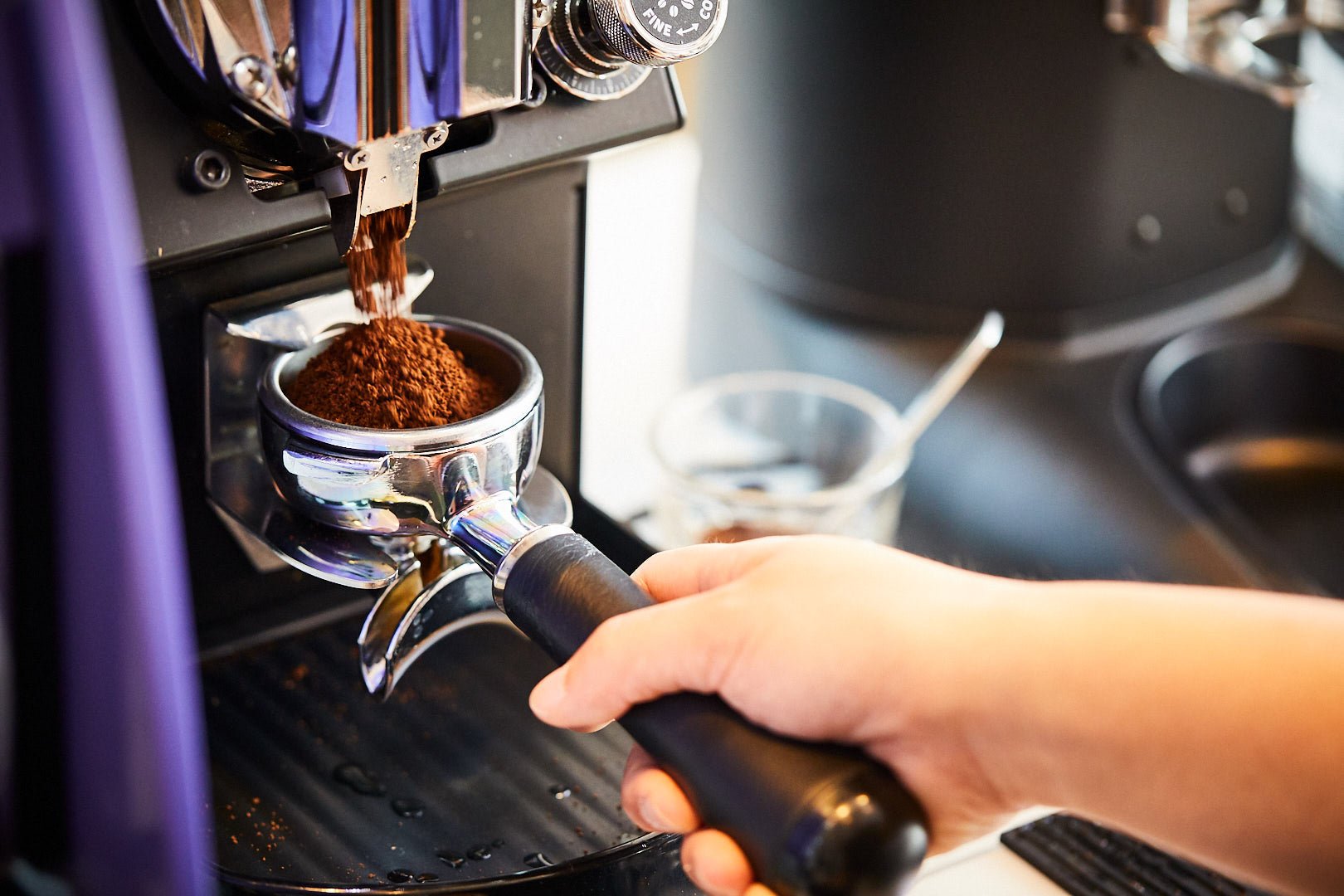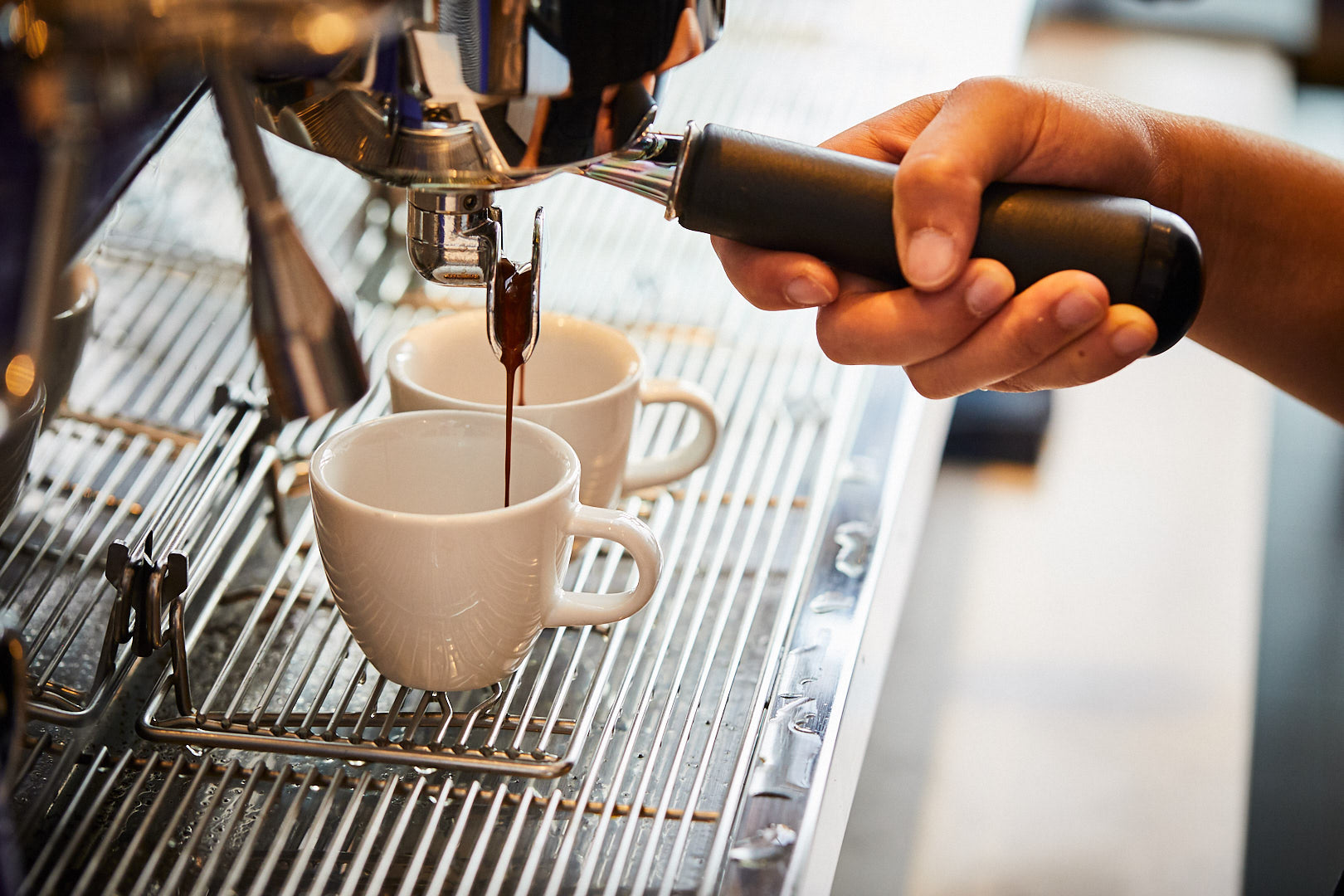
Howdy, home baristas! We hope the social distancing lifestyle is treating you well. Truth is, we’ve been thinking about you a lot these days. How’s your coffee tasting? Are you making any advancements on the latte art front? What have you been reading lately?
Present times aside, we’re here to talk espresso. It’s kind of like coffee’s cousin that spent a semester studying film in Europe - there’s this affectation of sophistication, an unspoken pretension that can be downright intimidating. Put your drip coffee next to a cappuccino and tell me that’s not the guy she told you not to worry about, you know what I mean?
When you break down all the moving parts and strip away the intimidation factor, it’s easy to see espresso is simply another way of brewing coffee. That’s to say, you can still make a mean latte at home without a lick of professional barista experience. Promise.
Our handy-dandy handyman, Dorian, is one of the biggest espresso-philes we know. Here are his tips to get the most out of your home espresso machine, whether it’s covered in dust in the garage or sparkling on your kitchen counter.
1. Use an espresso grinder
On every bag of Greater Goods coffee, you’ll find these three words: grind before brewing. We usually recommend the Baratza Encore or any similar burr grinder for home brewing, but when it comes to espresso, those grinders don’t always grind fine enough or consistently enough to get the job done.
Dorian recommends investing in a grinder that is specifically designed for this method of preparation, like the Baratza Vario or Sette 270.
“Here’s the bottom line, if you have a $1,000 machine and a $40 grinder, you’re going to have $40 espresso,” he said. “It’s like if you bought a Ferrari and gassed it up with Kool-Aid. It defeats the purpose.”
2. Maintain a regular cleaning schedule
Coffee is an oily substance by nature. Those oils will build up over time, and can be a real pain to clean. To get rid of them once and for all, soap and water ain’t gonna cut it.
You’ll likely need some heavy-duty supplies, and Dorian recommends Urnex’s line of food-safe and non-toxic cleaners. We (along with most cafes in the country and beyond) use these products every day to maintain our equipment.

Photo by Urnex
Your home barista cleaning procedure should include your machine and all its parts, the portafilters, your grinder, and any tools used to steam milk (more on that in tip #3).
How often you clean is going to depend on how often you use your machine. If you’re making a drink once a day, a weekly regimen should do the trick. Also, consider descaling your water tank once every couple of months. We’ll write a more in-depth article about coffee and water soon. Stay tuned.
You can find easy-to-follow cleaning guides on the Urnex website, as well as a helpful FAQ section. We carry some of their products in our cafes, but it’s always a good idea to call ahead to check availability.
Once your grinder and machine are spick and span, your espresso will be brighter, clearer, and more flavorful.
Here's our technician, Dorian, teaching you step-by-step in a handy dandy YouTube video:
3. Clean your milk tools after each use
If you’re steaming milk (or a milk alternative), it’s crucial to purge your wand before and after each use. Much like the oily residue that comes from coffee beans, milk proteins will latch onto your steam wand and pitchers.
Does this look familiar?

Photo by Urnex
We’re sad. We’re crying. We never want to see a fuzzy steam wand again!
Urnex’s Rinza tablets are super easy to use, and will solve all your dairy and non-dairy woes. Simply add one tab and 250ml of warm water to a milk pitcher, insert your steam wand, and soak for 15-30 minutes. Rinse all your components with clean water and voila! Good as new.
Cleanliness is next to barista-pro-liness. (That’s a word. Deal with it.)
4. Use a scale
Remember that Ferrari you bought back in tip #1? Now imagine driving that Ferrari with your eyes closed down I-35. Perhaps we’re being a little melodramatic, but the sentiment still stands: precision affects quality.
Use a scale that measures to the .10 of a gram for both your dose (ground coffee) and yield (liquid espresso). We use Acaia’s Lunar and Pearl models in our cafes for their ease of use and built-in timers.
Having accurate measurements of your recipe will make way for adjustments, which will make way for - you guessed it - better tasting espresso.
5. Have fun with it!
Dorian’s favorite tip for home baristas? Trust your palate and have a good time.
Notice the nuances of what you’re tasting and adjust your recipe accordingly, or try something new and exciting! Any coffee can be espresso. A few days ago we dialed in Agua Colorada as a featured espresso. It tastes juicy and crisp, like a green apple dipped in homemade caramel.
“A lot of people are scared to make espresso at home,” said Dorian. “But remember, even the best baristas made some crappy coffee at the beginning. It takes practice.”
Bonus Tip: The Espresso Compass
This one comes from me, y'all. When I competed in U.S. Coffee Champs last season, this super helpful infographic from Barista Hustle changed my life.
It's a great starting point for trusting your palate and expanding your knowledge of extraction and espresso.
Taste each shot and adjust your perimeters accordingly. For the most part, keep your espresso at a 1:2 ratio (or whichever ratio you prefer).
Adjust your grind size first, then your yield. Get curious and do some googling around! This is how we learn.
As always, our baristas are here to help. We’re the real-life humans behind the phones, our Instagram and Facebook accounts, and hello@ggroasting.com. If you have any concerns, questions, or if you’re ready to upgrade your equipment, shoot us a message or visit us in-person (at a safe distance) at our cafe locations. We’ve got abbreviated hours, stocked shelves, and online ordering. Cheers!



